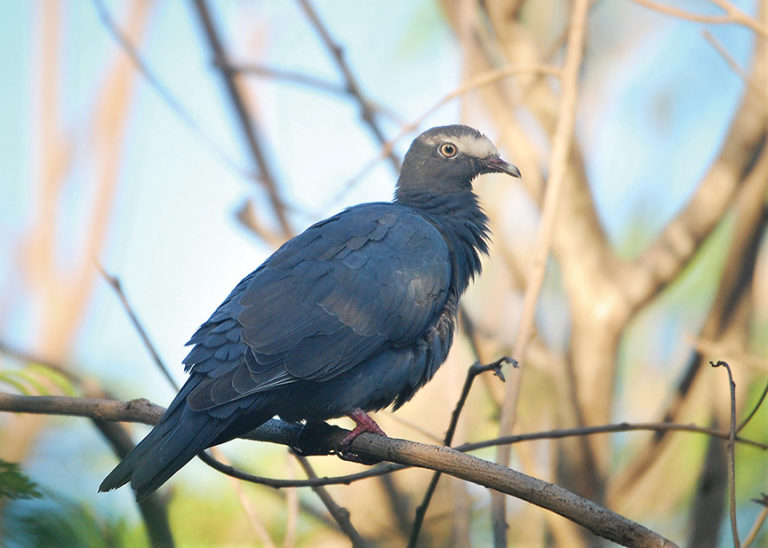Late September and early October is a prime time for birding on South Padre Island. The seasons are shifting and birds are on the move! Birds are leaving their breeding grounds and most are migrating from northern latitudes to warmer climates in the tropics, riding south on the early and mild cold fronts of the season.
These northern breeders are the birds that we are accustomed to seeing pass through South Padre Island, but September and October are also a peak in tropical weather activity and a time when the Rio Grande Valley bears storms coming up from the tropics carried by the strong southeast winds that also occur during this season. These winds can sometimes bring with them birds from latitudes below us or birds straight out of the Gulf waters.
The winds and the weather can be erratic during this time of year as the earth tilts, and if you are a bird flying on the sake of the powerful push and pull of the shifting winds, it’s easy to get turned around and disoriented. Because of South Padre Island’s location on the map, it makes for a perfect resting place for a castaway bird.
Such is the case of a bird that was discovered here in the front gardens of the South Padre Island Birding & Nature Center on Wednesday, Oct. 3. While talking to Diego, SPIBNC groundskeeper, under the shade of a tree in our front gardens, he directed my attention to the tree. “Mira esa Paloma,” he said as he pointed into the branches directly above us.
I responded with, “Diego, that’s not a regular pigeon!”
He had just spotted Texas’ third record White-crowned Pigeon! A bird ranging from the tropical waters of the Caribbean! The closest this species is seen from SPI are the Florida Keys, Cuba, or the coastal southern tip of the Yucatan peninsula hundreds, if not a thousand miles, away!
As a naturalist, these are the types of sights that make my heart race and send me running for my camera with sandals clanking all the way up the stairs to my office! How did this bird get here? Did it just fly across the Gulf of Mexico?!
All of the elements that I described in the beginning still don’t exactly explain how this bird got to our gardens and where it came from. That will remain a mystery and that mystery is what gives so much wonder and intrigue to a sighting like this! A curveball from Nature!
Word quickly spread about this extremely rare visitor and birders from across the RGV soon arrived for a look. The next day people from different parts of the state started to arrive, as well, from cities like Houston, Austin, San Antonio, Corpus Christi and Galveston to name a few.
Although this is the third sighting on record of this species in the state, it is the first record that has given Texas birders the opportunity to chase and get a look at. It’s been great to see so many people enjoy this bird and the camaraderie that it has produced.
Although the bird is lost, it did find a good place that sort of resembles home. This species inhabits coastal areas where they roost in mangroves and fly to feed in stands of fruiting trees. As of now, the bird seems to have found a nice roosting site in a dense tree where it feels safe and has developed a liking to the berries of the many Possum Grape Vines that climb up the trees and vegetation in the garden. There is no telling how long the bird will stay, but in the meanwhile, it will continue to dazzle visitors!
By JAVIER GONZALEZ





